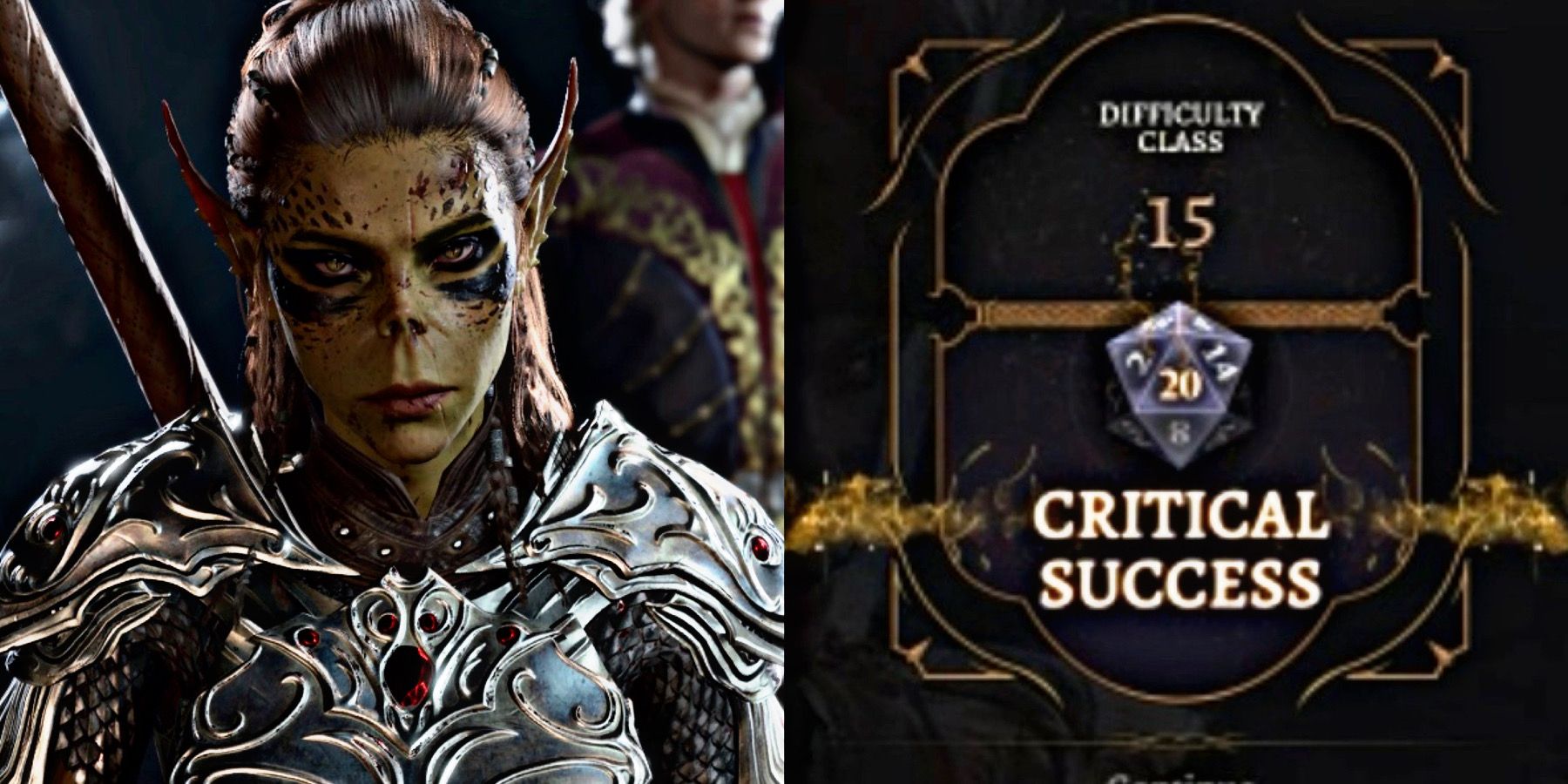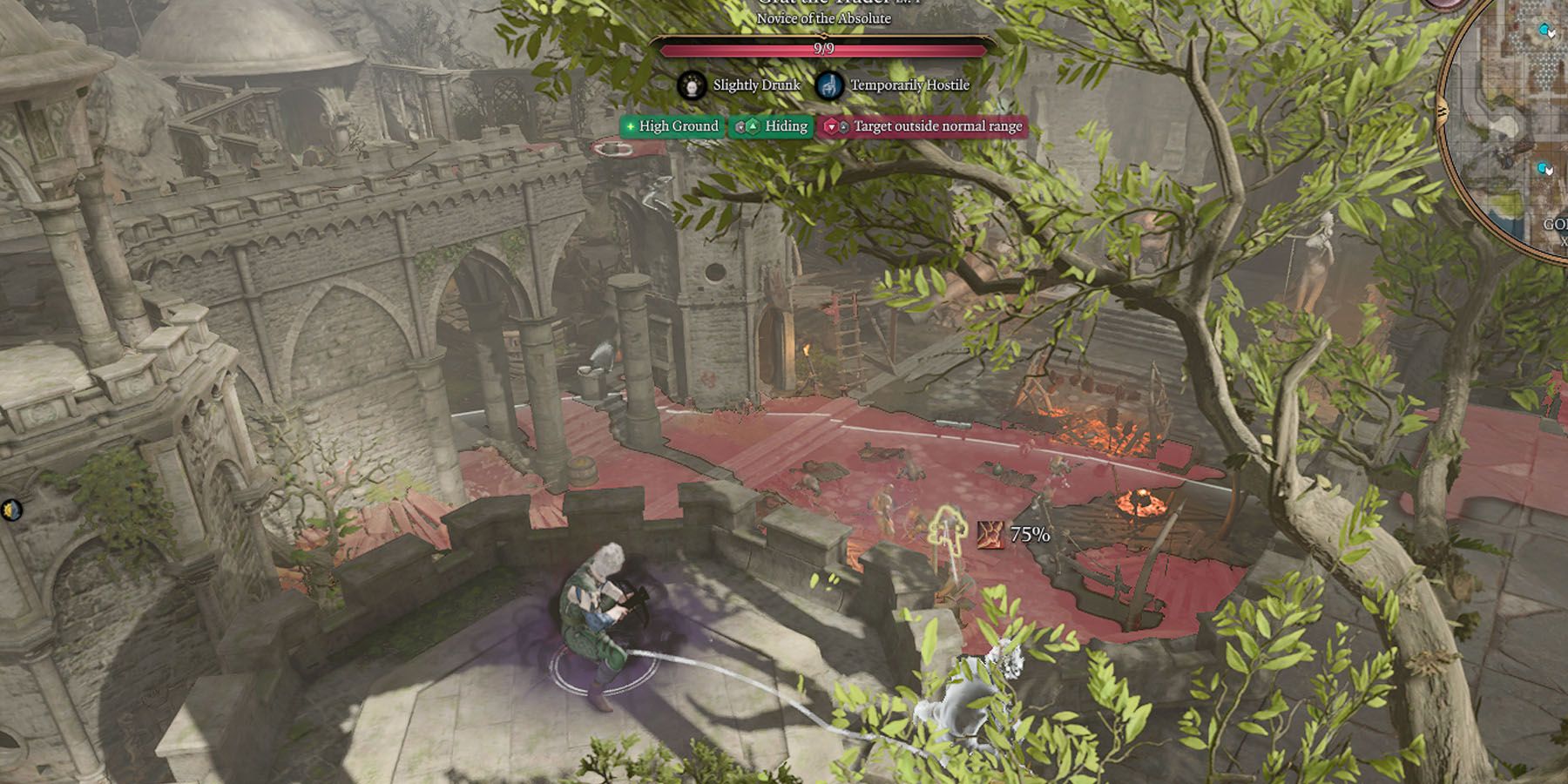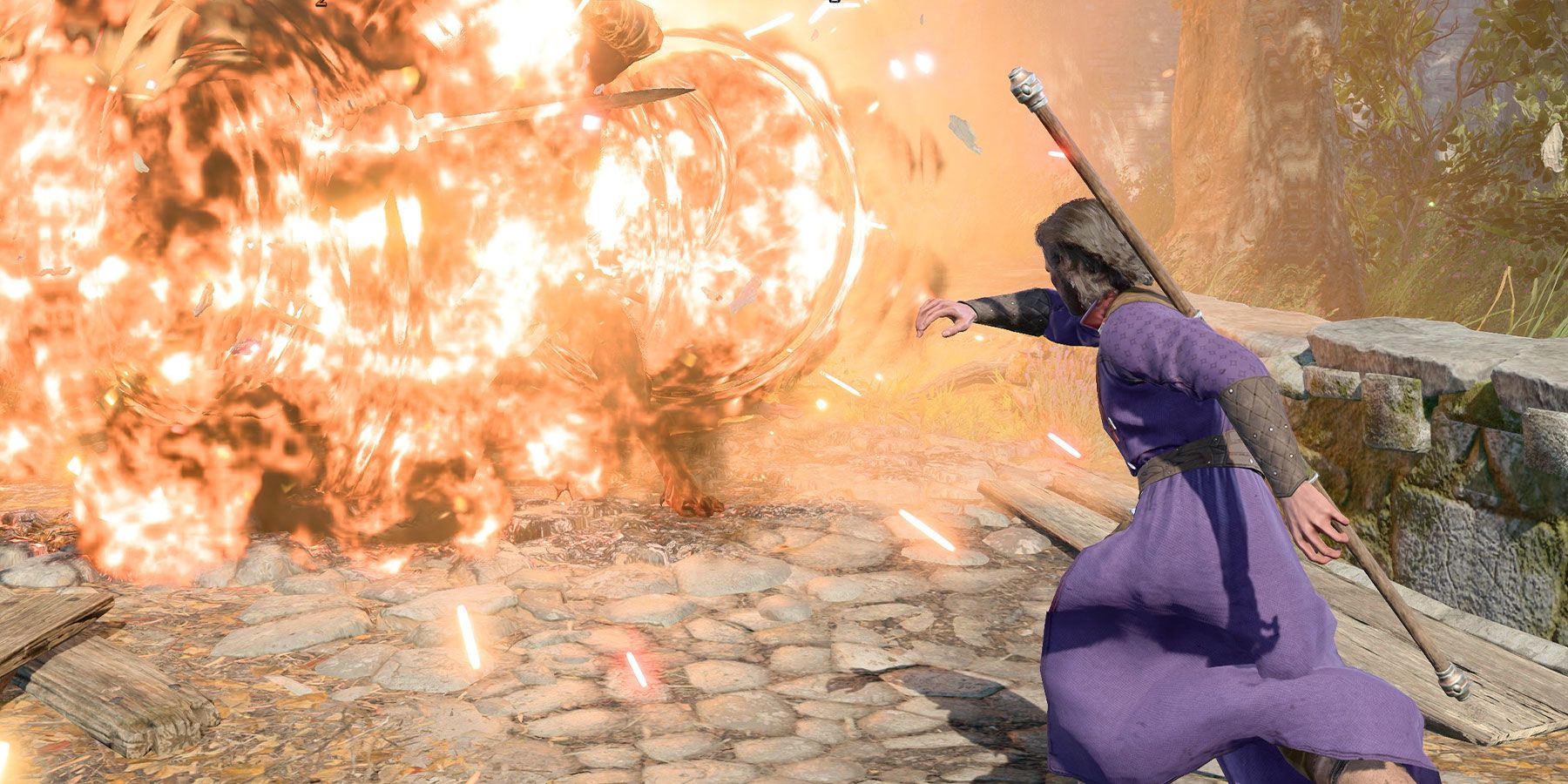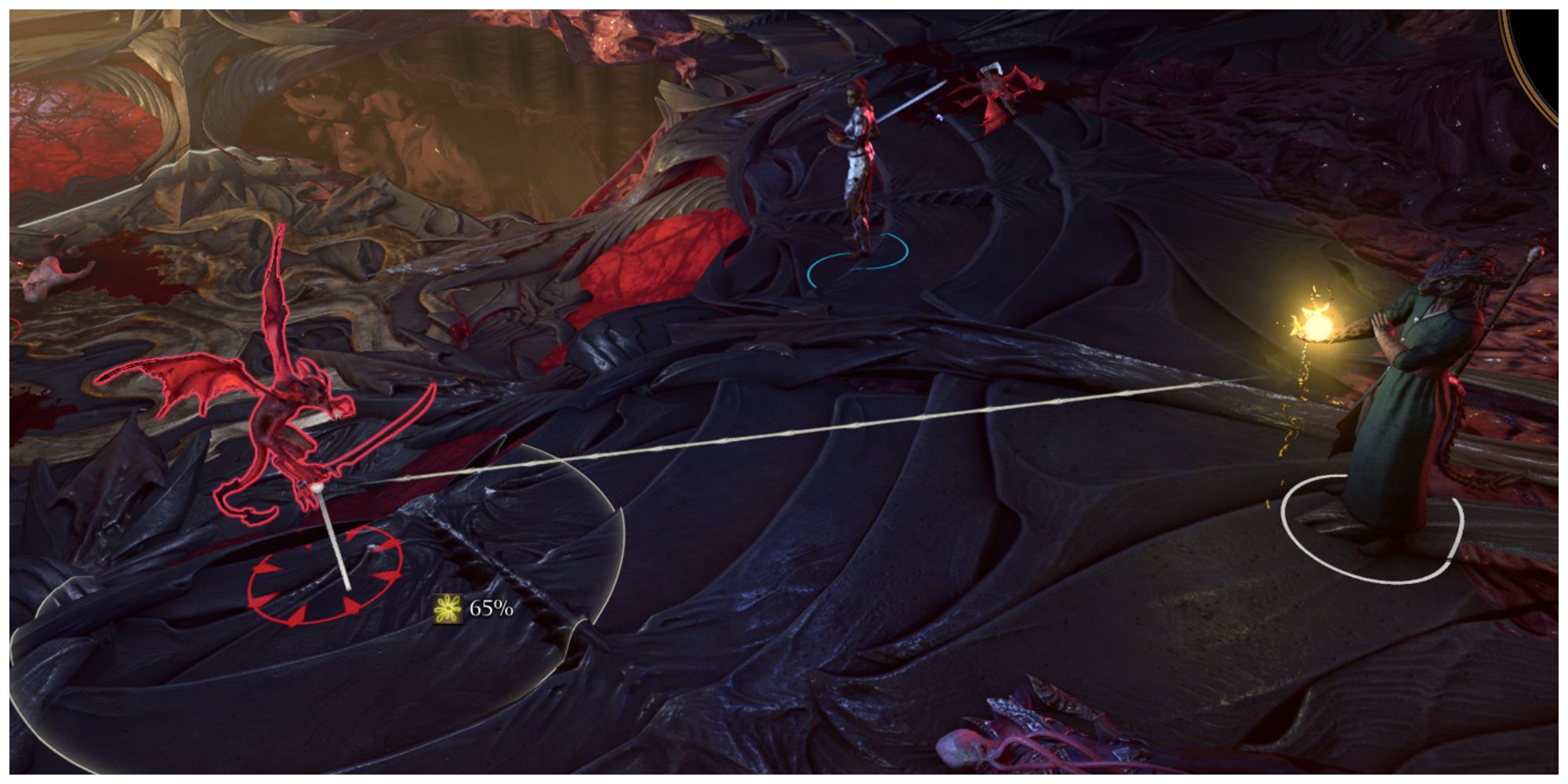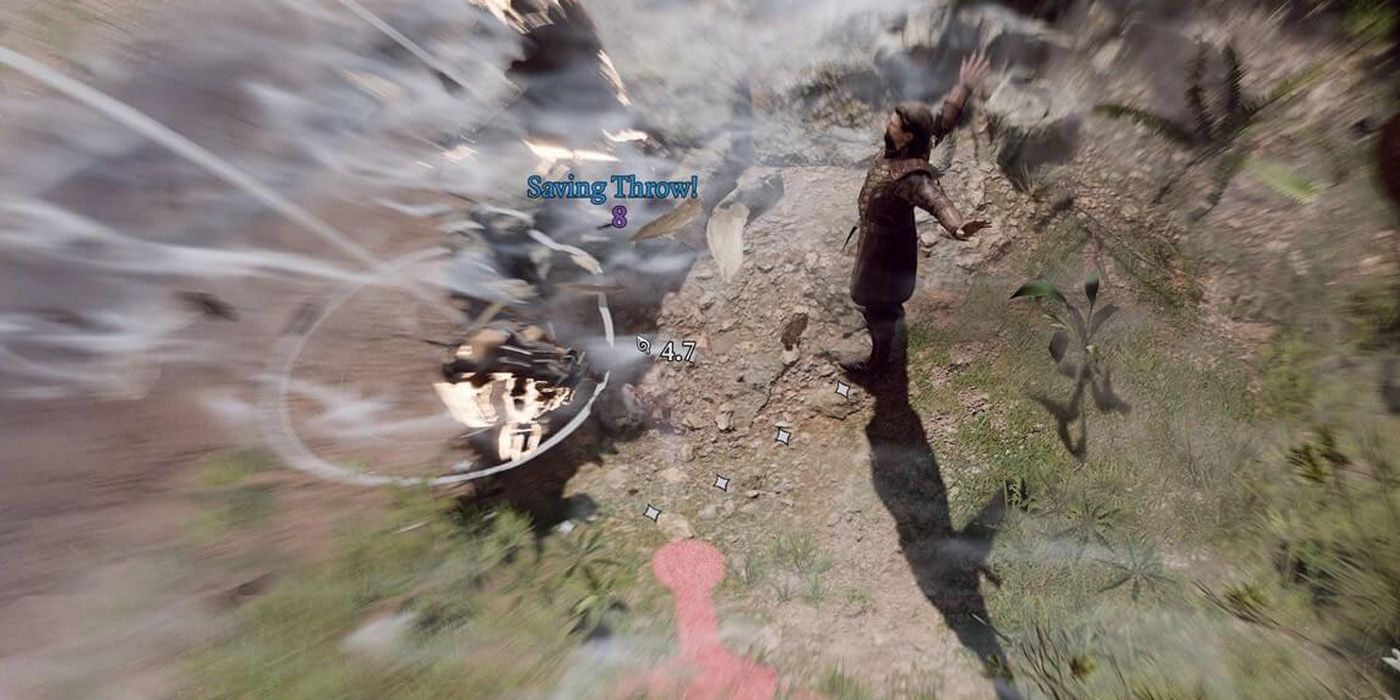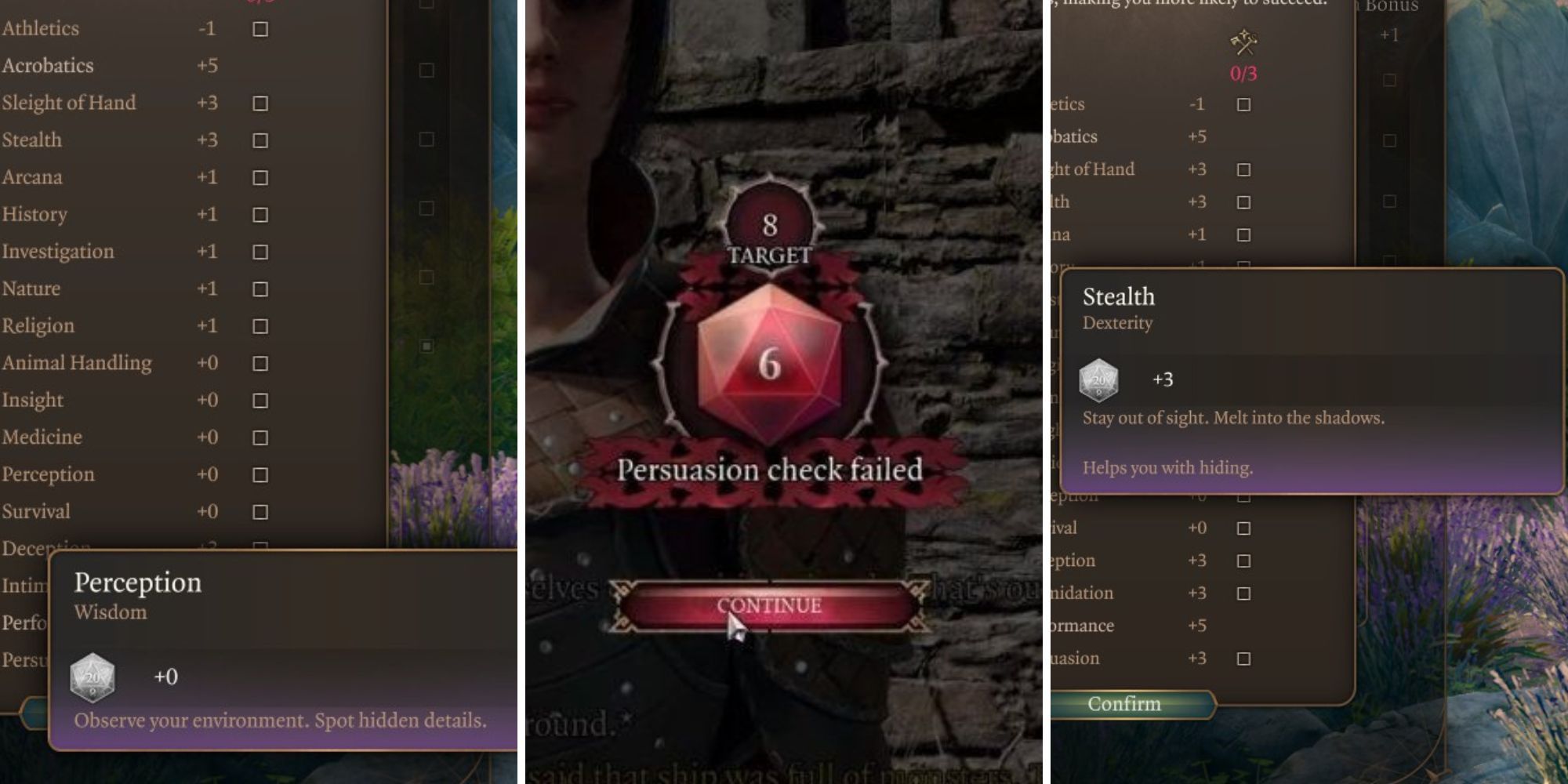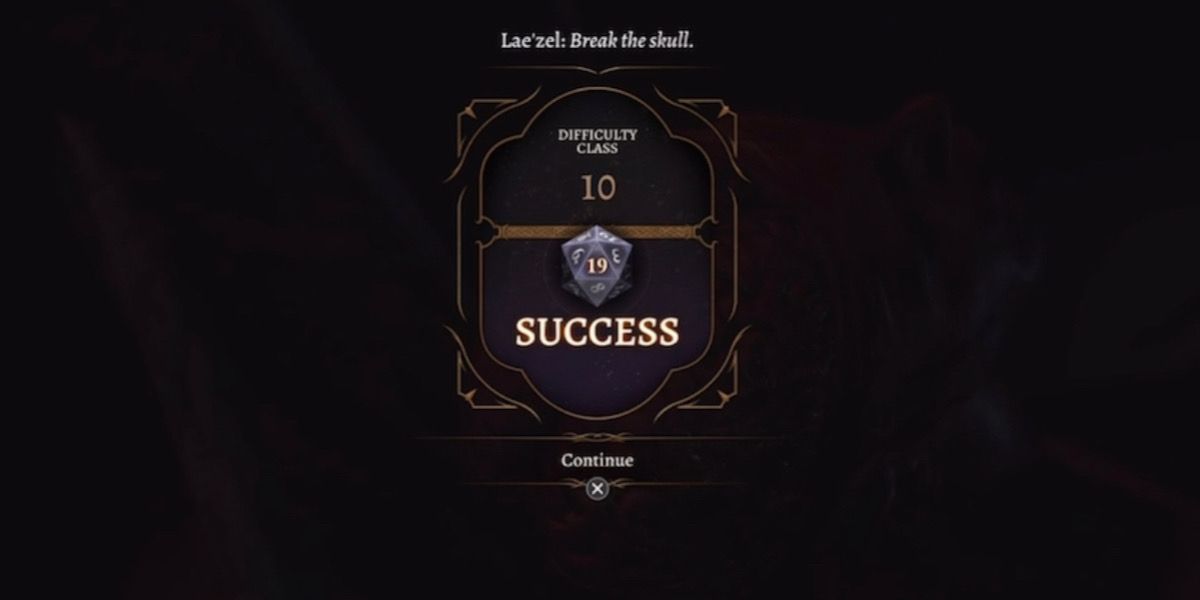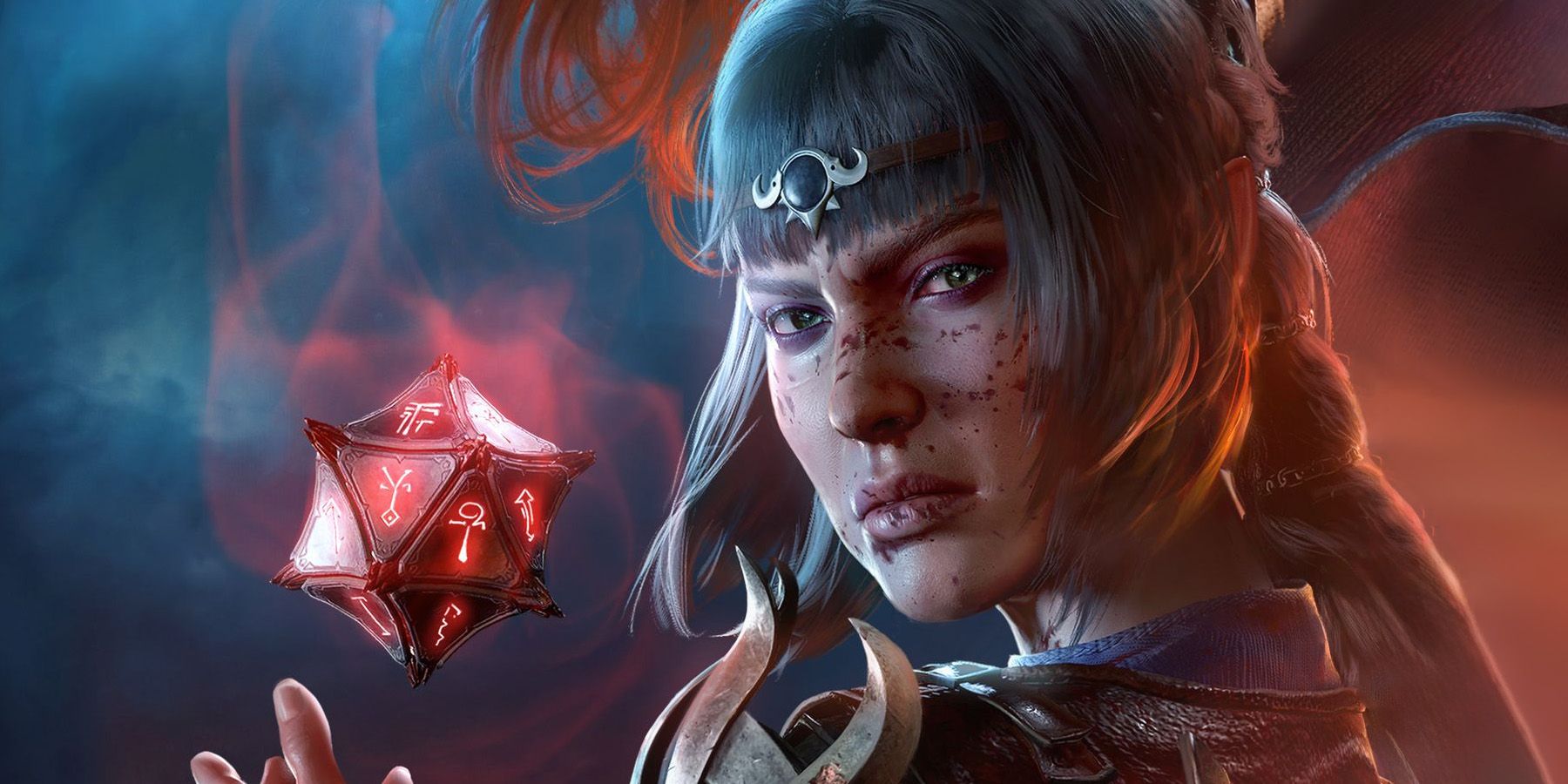Baldur’s Gate 3 is an incredibly fun game based on Dungeons & Dragons. The game can look challenging for newcomers who have never experienced DnD, as the entire world and the events there, including combat, revolve around randomized dice rolls.

The Most Fun Baldur’s Gate 3 Classes, Ranked
These classes give the player the most fun experience in Baldur's Gate 3.
For the best playing experience in Baldur’s Gate 3, here’s a guide detailing everything that should be known about the die – from its types, to its mechanics, as well as other important things such as inspirations.
Die Types Players Should Know About
While playing Baldur’s Gate 3, they might come across terms such as 1d6 and others. While players who also play Dungeons & Dragons or, at least, have some knowledge concerning that game might know what all of this means, players new to this might not.
In Baldur’s Gate 3 and Dungeons & Dragons, most of the game runs on the d20, however, other dices will be seen throughout the game, usually to calculate damage, such as d4, d6, d8, d10, and d12.
Here, d stands for a die, and the number after it determines how many faces the die has. A d20 has 20 sides, therefore having 1 to 20 numbers on it. A d6 has the numbers 1 to 6, and so on.
The player might also encounter dice such as a 2d4, for example. The number before the d represents the number of dice that will be rolled, so a 2d4 will result in the roll of two four-faced dice.
Dice Roll Mechanics
There are many situations that will require the character to roll the die, especially during combat, as it governs every single action the player does.
Initiative Roll
When entering combat, the initiative roll will decide who fights first. Every character rolls a d4. It decides the order of action of each character of the players. The character with the highest number goes first.
The main modifier of this roll is Dexterity. Other modifiers can include Alert or the feature Feral Instinct. It can also be increased with items such as the Elixir of Vengeance.
Attack Roll
The attack roll determines if an attack hits the target or not. A d20 is rolled for it, and if the result is higher or equal to the enemy’s Armor Class, then the attack is a success. If the result is lower than the enemy’s Armor Class, the attack will miss.
As a general rule, close-range weapons use Strength as a modifier, while long-range attacks use Dexterity. The proficiency with the equipped weapon contributes to the dice roll too.
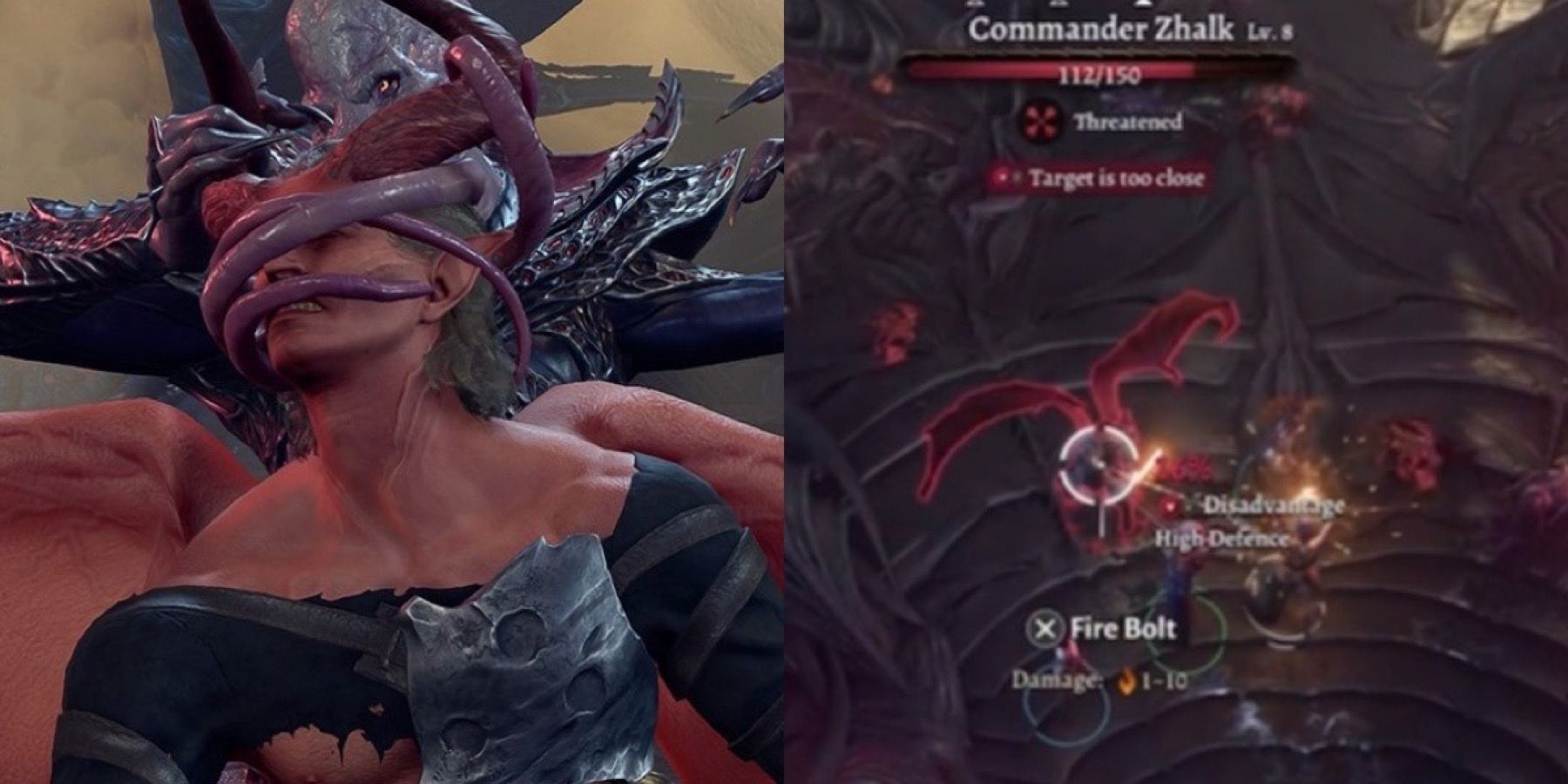
Baldur’s Gate 3: How To Beat Commander Zhalk
It's possible to defeat Commander Zhalk and acquire a powerful weapon, the Everburn Blade, in Baldur's Gate 3.
All attacks with weapons use the attack roll, and some spells do too, such as Fire Bolt. Meanwhile, others do not, such as Magic Missile.
Damage Roll
If the Attack Roll is a success, then the Damage roll will get rolled. There isn’t a specific dice use here, as it all depends on the weapon or spell the character is using.
For example, Acid Splash deals a 1d6 acid damage, which would mean the base attack damage will be between 1 to 6. Modifiers can be added to this, making the attack stronger.
Saving Throw Roll
Saving throws dice are rolled as a d20 when a character is attacked to determine if an action against them hits or misses. If a saving throw is successful, a character can avoid damage, usually against spells, as well as their effects.
Saving Throws are affected by the attacker’s attack's Difficulty Class. The higher it is, the harder it is to succeed in a Save. Modifiers also affect this.

Baldur’s Gate 3: Half-Elf Race Guide
Here's all the information players might need about the Half-Elf race in Baldru's Gate 3.
Each class in BG3 will be proficient in 2 types of saving throws, each having a unique combination. Notably:
- Barbarian: Strength + Constitution
- Bard: Dexterity + Charisma
- Cleric: Wisdom + Charisma
- Druid: Intelligence + Wisdom
- Fighter: Strength + Constitution
- Monk: Strength + Dexterity
- Paladin: Wisdom + Charisma
- Ranger: Strength + Dexterity
- Rogue: Dexterity + Intelligence
- Sorcerer: Constitution + Charisma
- Warlock: Wisdom + Charisma
- Wizard: Intelligence + Wisdom
Ability Check
While exploring the BG3 world, the player will likely come across Ability checks, which is a d20 roll in addition to the ability score modifier of the specific ability required at that moment.
For example, when walking around, the player might be faced with a perception check, which can determine if the characters can notice traps in their environment or not.
Dice Roll Modifiers
Dice Roll Modifiers can affect the dice rolls, positively or negatively. This includes ability modifiers, such as dexterity for ranged weapons attacks.
It also includes Proficiency Bonus for weapons, which means being proficient in the weapon currently being used.
Some status effects can also affect the dice roll, such as Bloodless, which adds a -1 on rolls.
Critical Success And Critical Failure
When using the d20, a critical success would mean rolling the highest number, in this case, a 20, while rolling a critical failure would result in rolling a 1.
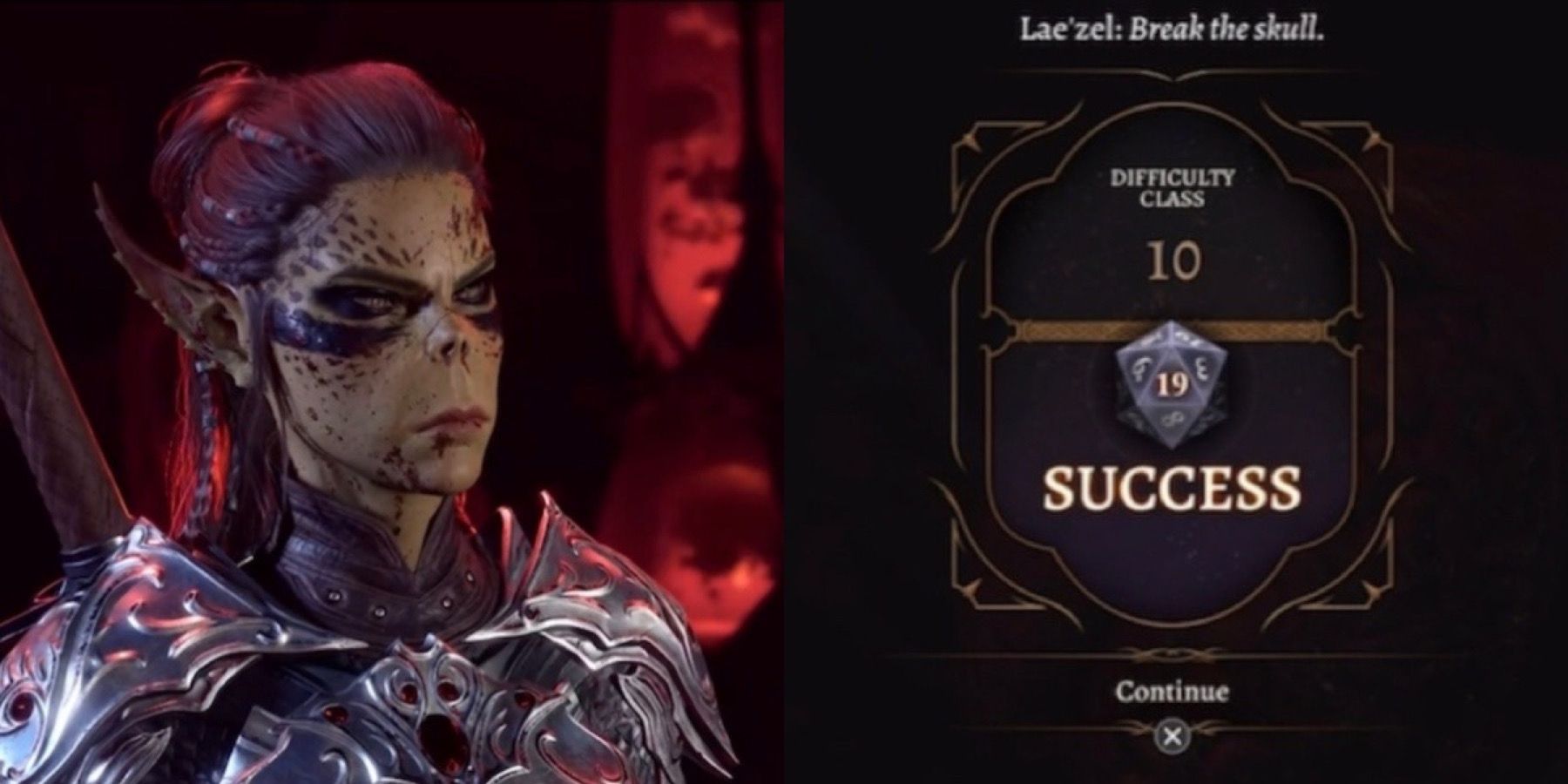
Baldur’s Gate 3: How to Improve Good Dice Roll Chances
Baldur's Gate 3 is all about succeeding in your dice rolls.
Critical Success is the best result one can get. When a player rolls that, it’s a guaranteed successful roll. Even if the player has negative modifiers, it will not affect their success.
Critical failure, on the other hand, is the worst result possible. When that is rolled, the player will automatically fail. In this case, the modifiers that could’ve made it a success don’t affect the dice roll. There’s nothing the player can do to avoid this result, besides save scumming.
Inspiration
Inspirations in Baldur’s Gate 3 are ways to reroll a die in case it fails. It works on Ability checks and can’t be always used, for example, during combat. The player can hold on to a max of 4 at a time, and since the player will probably get a lot throughout the game, it would be wasteful to not use them when needed.
Inspirations can be acquired by doing actions that match the character’s background. For example, a character with a Soldier background will gain inspiration if they save everyone during the goblin’s assault.
Karmic Dice
The Karmic Dice is an optional feature in Baldur’s Gate 3 that players can turn off, if so desired. It is on by default if the player does not turn it off.
To put it simply, when it is on, the player will be able to avoid bad streaks of luck. So, if a player gets a bad dice roll, such as a critical failure, their next dice roll will be better. Players should keep in mind that when their karmic dice is on, so is the enemy’s, so they too will benefit from it.
When the Karmic dice is off, the game will be purely based on luck, so the player can get many bad die rolls subsequently, which can be frustrating to some players.
With all this information, players are sure to understand the concept, as well as the usage of dice in BG 3 better, and make wiser decisions.
Baldur’s Gate 3 is now available to play on PC and PlayStation 5.

